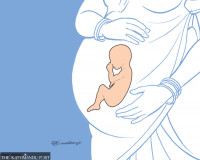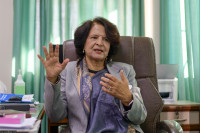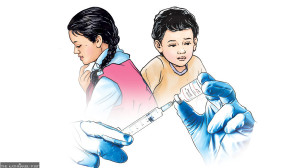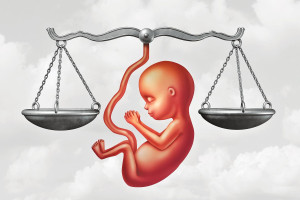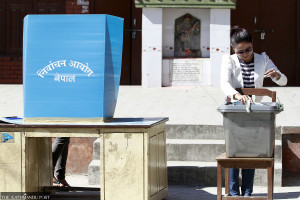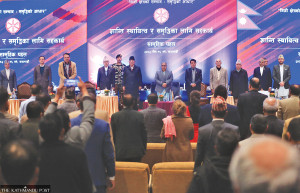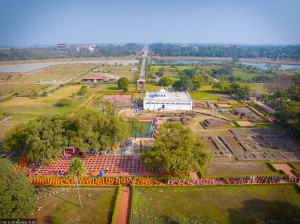Health
Nepal’s anaemia fight stalls as iron and folic acid supplies run out
As federal, provincial government’s pass the buck, 34 percent of women and 43 percent of children in Nepal are anaemic.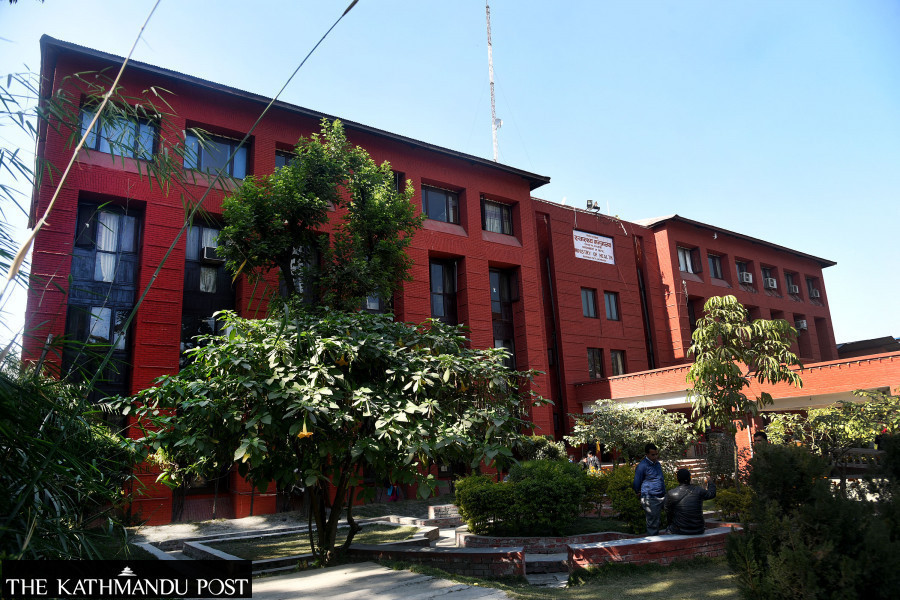
Arjun Poudel
Hundreds of thousands of pregnant women, new mothers, and girls between 10 and 19 have been deprived of iron and folic acid for months, as state-run health facilities across the country have run out of the vital supplements.
The free iron and folic acid supplementation programme, which was initiated to reduce the high prevalence of anaemia among adolescent girls, pregnant women, and new mothers, has stalled.
“Yes, many health facilities from across the country are out of iron and folic acid,” said Lila Bikram Thapa, chief of the Nutrition Section at the Family Welfare Division under the Department of Health Services. “We have requested local units to use their funds to continue the distribution of supplementation tablets.”
Anaemia is a condition in which blood produces low levels of haemoglobin or healthy red blood cells. Iron and other nutritional deficiencies, malaria, infection with hookworm, chronic infections, and genetic conditions, including sickle cell diseases are among the reasons for anaemia.
Doctors say anaemia in adults can cause fatigue, lethargy, reduced physical productivity, and poor work performance. It is a major concern among pregnant women, as problems can lead to increased maternal mortality and poor birth outcomes.
“Anaemia during pregnancy increases multiple health risks including foetal growth retardation and low birth weight, premature delivery, increased perinatal mortality, and reduced resistance to infection for both mother and baby,” said Nisha Joshi, public health officer at the Family Welfare Division. “The problem can impair cognitive development of children and can have long-term health and economic implications for society.”
Health Ministry officials say that the federal government has not purchased iron and folic acid tablets for the last two years, and has not allocated any budget for the programme. Responsibility for purchasing the supplement tablets was given to provincial government agencies, but they too have not made purchases.
“We last purchased the supplement tablets around three years ago and thought that the stock would be sufficient for the ongoing fiscal year,” said Thapa, chief of Nutrition Section. “We don’t have an additional budget to purchase the supplement for the ongoing fiscal year.”
Officials say that they have requested aid agencies, including Helen Keller International Nepal, Care Nepal, ADRA Nepal and others for financial support to purchase the supplement tablets for the three months of the ongoing fiscal year.
Nepal Demographic and Health Survey-2022 conducted by the ministry shows that 34 percent of women between 15 and 49 years old were anaemic– 19 percent mildly anaemic, 15 percent moderately anaemic and one percent severely anaemic.
Women living in the Tarai region are more likely to be anaemic (45 percent) than those living in the hills (20 percent) and in the mountainous regions (23 percent). More than half the women (52 percent) are anaemic in the Madhesh Province.
The same study also divulged that 43 percent of the children aged between six to 59 months have been found to be anaemic—25 percent mildly anaemic, 18 percent moderately anaemic and one percent severely anaemic.
Madhesh province had the highest child anaemia rate at 50.6 percent, followed by 48.9 percent in Lumbini, 45.4 percent in Sudurpaschim, 42.5 percent in Bagmati, 39.8 percent in Karnali, 33.9 percent in Koshi and 30.7 percent in Gandaki province.
In the 1990s, three in four pregnant women in Nepal were anaemic. To address the growing burden of anaemia and resulting health consequences, the government had initiated an iron and folic acid supplementation programme in 2003.
Under the programme, all pregnant women above four months of pregnancy and new mothers up to seven weeks postpartum were given a supplementation tablet daily. Girls between 10 and 19 were given 26 tablets a year.
Officials at the Health Office, Kathmandu, said that they have been unable to provide supplementation tablets since March this year. It is estimated that there are over 28,000 pregnant women in Kathmandu. The number of teenage girls taking supplementation tablets is over 147,000 in the district.
“We need over 10 million supplement tablets in a year,” said Satis Bista, a senior public health administrator at the Health Office, Kathmandu. “Each pregnant woman requires 225 iron and folic acid tablets during their pregnancy, and each girl needs 26 tablets annually.”




 15.69°C Kathmandu
15.69°C Kathmandu
